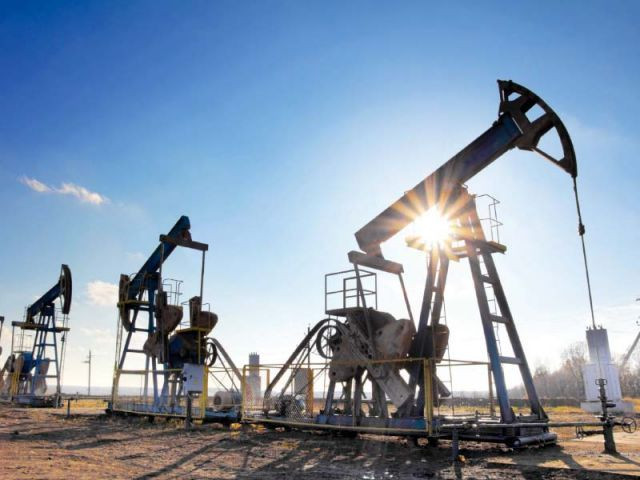Oil, gas production continues to fall
Output drops due to depletion of reserves, no big find in a decade

Pakistan’s oil and gas production has continued to drop due to depletion of existing reserves while exploration firms have frequently failed to find large hydrocarbon deposits to bridge the deficit for over a decade.
The country’s reliance on fuel imports is on the rise, which consumes a significant amount of foreign currency reserves. Demand for oil and gas has grown with a gradual pickup in economic activities, including industrial production and agricultural harvests, following a reduction in Covid-19 cases.
Besides, the household demand for electricity is gradually picking up pace with the purchase of electrical and electronics products like split air conditioners, LED TV, refrigerators, deep freezers and laptops.
Oil and Gas Development Company Limited (OGDCL) - the largest hydrocarbon exploration firm in Pakistan - said in a report sent to the Pakistan Stock Exchange (PSX) on Friday that its oil production dropped 4.36% to an average of 36,423 barrels per day (bpd) in the first half (Jul-Dec) of current fiscal year compared to 38,084 bpd in the same period of last year.
Similarly, its gas production shrank 5.93% to an average of 856 million cubic feet per day (mmcfd) in the first half of fiscal year 2020-21 compared to 910 mmcfd in the corresponding period of previous year.
Its liquefied petroleum gas (LPG) production, however, improved 4.15% to 778 tons per day in the first half of FY21 compared to 747 tons per day in the same period of last year.
OGDC’s share in total oil production in the country was 47% in Jul-Dec 2020. It produced 28% of total natural gas and 36% of LPG during the six-month period, the company reported in its half-year accounts.
However, OGDC is not alone in experiencing a drop in production, the national oil and gas output has also continued to remain poor for a long time. Topline Research recently reported that Pakistan’s oil production fell 6% year-on-year to 76,331 bpd in the second quarter (Oct-Dec) of FY21 due to a decline in production at Mardankhel and Makori Deep fields of Tal block by 27% and 31% respectively.
Pakistan’s gas production fell 4% year-on-year to 3,409 mmcfd as flows from Kunnar Pasakhi Deep (KPD), Kandhkot and Qadirpur fields decreased in the range of 6-18%.
Also read: Oil rises amid outages in US
The production dropped despite the addition of five new oil fields and four new gas fields during the quarter, it said. Pakistan’s oil production rose above 95,000 bpd in 2017 but it has been declining since then, according to tradingeconomics.com.
According to OGDCL, its oil and gas production had been impacted primarily by a natural decline in output at Kunnar, KPD-TAY, Dakhni and Nashpa fields.
Moreover, production decreased on account of non-revival/ partial revival of forced shut-in wells - Kunnar 2, 3, 9 and 10 - during Covid-19 coupled with annual turnaround at Dakhni, Nashpa, Sinjhoro and Uch (October 2020).
Similarly, gas production was affected by a decline in production at NJV fields combined with less gas intake from Qadirpur and Uch fields by Engro Powergen and UPL-I and II respectively, OGDC said.
“The decline in production was partially mitigated by the injection of 10 operated wells into the system…which cumulatively yielded gross crude oil and gas production of 163,894 barrels and 2,039 million cubic feet respectively,” it added.
With the drop in domestic production, imports of refined petroleum products increased 43% to 8.26 million tons in the first seven months (Jul-Jan) of FY21 compared to 5.77 million tons in the same period of last year, according to the Pakistan Bureau of Statistics.
Similarly, imports of petroleum crude increased about 15% to 5.23 million tons in Jul-Jan FY21 compared to 4.56 million tons in the corresponding period of previous year.
The overall energy import bill (including liquefied natural gas and LPG) contracted 21% to $5.64 billion in the seven-month period due to low energy prices in the international market in the wake of the pandemic.
Now, oil prices are again on the rise along with a drop in Covid-19 cases, vaccine rollouts and reopening of global economies.
Benchmark Brent crude price has increased around 28% since January 1, 2021 and hit a one-year high above $66.5 per barrel this week. It is expected to touch $70 before the arrival of summer season. There is a dire need to focus on domestic oil and gas production to lessen the reliance on imports. The government awarded 15 new blocks to exploration and production companies in January 2021 after a gap of several years.
These companies are expected to step up efforts for the search of oil and gas deposits following a significant improvement in the law and order situation in areas rich in energy deposits.
Published in The Express Tribune, February 28th, 2021.
Like Business on Facebook, follow @TribuneBiz on Twitter to stay informed and join in the conversation.


















COMMENTS
Comments are moderated and generally will be posted if they are on-topic and not abusive.
For more information, please see our Comments FAQ